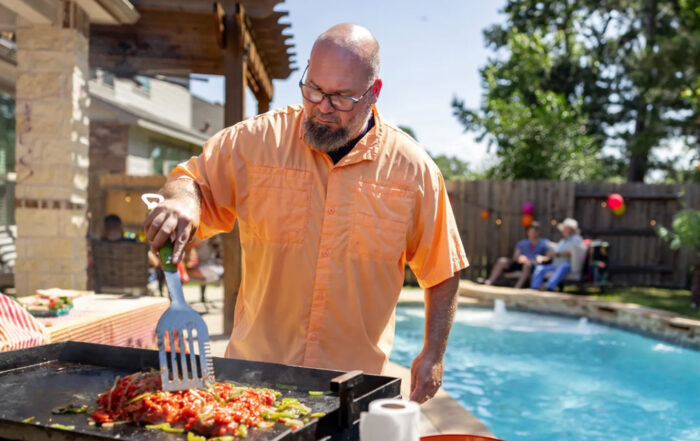How San Antonio’s Clay Soil Affects Your Home’s Foundation

Let’s talk about something lurking just beneath your feet—clay soil in San Antonio. It may not look like much, but this sticky, expanding, and shrinking soil is responsible for more foundation issues than you might think.
Cracks in your drywall? Sticking doors? Uneven floors?
Yeah… you can probably thank the ground under your house.
Understanding how this type of soil behaves—and why it’s especially tricky here in South Texas—can help you take smarter steps to protect your home and avoid costly repairs.
What Makes Clay Soil So… Complicated?
Here’s the deal: clay soil holds onto water like a sponge. When it’s wet, it swells. When it’s dry, it shrinks. It’s called an “expansive soil,” and it’s kind of a nightmare for anything sitting on top of it—like your foundation.
These soil types, especially vertisols, are full of fine particles that compact tightly and don’t drain well. So when San Antonio gets a big rainstorm (and we do), the ground soaks it up and expands. Then the Texas sun kicks in, and it all dries out and contracts. This constant movement? It stresses out your foundation over time.
Why Clay Soil in San Antonio Is a Special Case
So, why is clay soil in San Antonio worse than in other places? Two words: weather swings.
According to NOAA, rainfall in San Antonio can swing dramatically from one season to the next. One month, we’re in a downpour. The next? Drought conditions.
This seesaw pattern is brutal on expansive soils.
In fact, data from the Bexar County Soil Survey shows that large areas of the region are built on vertisols—expansive clay soils with a high shrink-swell potential. They’re the perfect storm for foundation stress.
The Real Problem: Drainage + Foundation Damage
If water isn’t draining properly around your home, things get worse—fast.
When water pools near your foundation, it saturates the surrounding clay soil, causing it to expand aggressively. This can push up on slabs, crack piers, or bow basement walls. And when the ground dries out? The soil contracts, leaving gaps where water can collect again. It’s a vicious cycle.
Clay soil problems caused by poor drainage include:
- Cracks in walls, floors, and ceilings
- Sloping or bouncy floors
- Brick separation or window gaps
- Sticking doors and windows
- Uneven sidewalks or patios
How to Improve Drainage Around Your Home
The good news? You can take control of the situation—starting with drainage.
Here’s how to improve clay soil and drainage around your home:
- Regrade your yard so water flows away from your foundation (not toward it)
- Install downspout extensions and gutter systems to move rainwater further away
- Use French drains or surface drains to collect and redirect water
- Add mulch or gravel around planting beds to slow runoff
- Apply clay soil amendments like gypsum to help break up compacted soil
These simple changes can make a huge difference—especially during San Antonio’s wet seasons.
When Drainage Fixes Aren’t Enough
Sometimes the issue goes beyond the surface. If your foundation is already shifting or cracking, you may need a more advanced clay soil treatment approach.
That might include:
- Installing a foundation watering system to regulate moisture during dry months
- Using chemical stabilizers (like lime or fly ash) to reduce soil expansion
- Installing deep root barriers to stop trees from drying out soil near your home
- Adding subsurface drains beneath patios or slabs
A licensed P.E. (Professional Engineer) may also recommend foundation piers or slab supports if the soil movement has already caused damage.
How to Break Down Clay Soil Fast (for Landscaping)
If you’re prepping a yard or garden and want to fix hard-packed areas fast, here’s how to break down clay soil fast:
- Loosen the top few inches with a shovel or tiller
- Add compost, coarse sand, or gypsum
- Water deeply to activate amendments
- Let the soil rest and repeat as needed
While this won’t stop foundation issues, it does improve surface drainage—another win in the fight against water buildup near your home.
The Role of Soil Amendment in Long-Term Success
A clay soil amendment is anything you mix into your soil to make it behave better—especially when it comes to drainage and root development.
For San Antonio homeowners, popular amendments include:
- Gypsum (helps improve structure without changing pH)
- Coarse sand (improves drainage)
- Organic matter (like compost or mulch for aeration)
Amending the topsoil around your home helps it handle rain better and keeps your landscape—and your foundation—on more solid ground.
Final Thoughts
Living with clay soil in San Antonio means accepting that the ground will shift—it’s just a matter of how much and how often.
But that doesn’t mean you’re powerless. By improving drainage, recognizing the signs of clay soil problems, and working with foundation professionals when needed, you can keep your home standing strong for years to come.
And remember—when in doubt, call in the pros. A foundation inspection now could save you thousands later.



